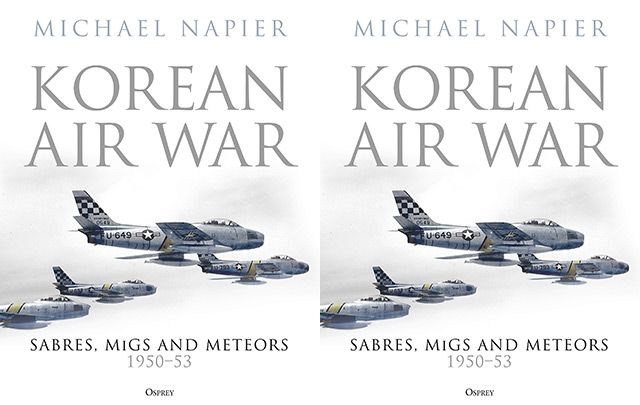Korean Air War: Sabres, MIGs, and Meteors 1950-53
Book review

Korean Air War: Sabres, MIGs, and Meteors 1950-53, Michael Napier, Osprey Publishing, 2021, 320 pages, £30, ISBN HB 978-1-4728-44446
Korea is known as ‘The Forgotten War’ and air warfare is usually considered a specialist area, which means that Michael Napier has taken on a daunting job in writing a history that is accessible to all. It is a tribute to his writing style and broad experience of his subject that he has succeeded so well. He is a former RAF Tornado pilot with front-line service in the Cold War and combat experience in Iraq, and this is his ninth book about different aspects of flying. He uses this broad experience to demystify the intricacies of war in the air and produce a comprehensive but very readable book. He is helped by excellent illustrations, with many of the pictures in colour.
The first chapter gives an introduction to the history and geography of Korea and the background to the war. Subsequent chapters follow the six phases of the ground war, making it easier for the general reader to understand. His brief final chapter succinctly draws together his conclusions and the addition of accounts by pilots from the three main combatant nations gives a personal flavour to the story.
The term ‘Limited War’ was coined for the Korean conflict, although now used in a broader historical context, which was fought by the major powers in the post-Hiroshima era without using atomic weapons. It featured the first major use of jet power in warfare; the blooding of a Communist Chinese air force that had only been in existence for a year, using Russian aircraft and pilots; and a US Air Force that had only been independent of the army for a few years. Although the UK, Australia, Canada and South Africa took part and North and South Korea had their own air forces the main combatants were the USA, USSR and China.
Napier takes us through the different air organisations and the wide range of aircraft used, so that we understand something of their capabilities before reading about their exploits. I found it helpful to jot down the different aircraft and their designations to help me as I read. They are not included in the Glossary and the book might have benefitted from a separate aircraft glossary.

